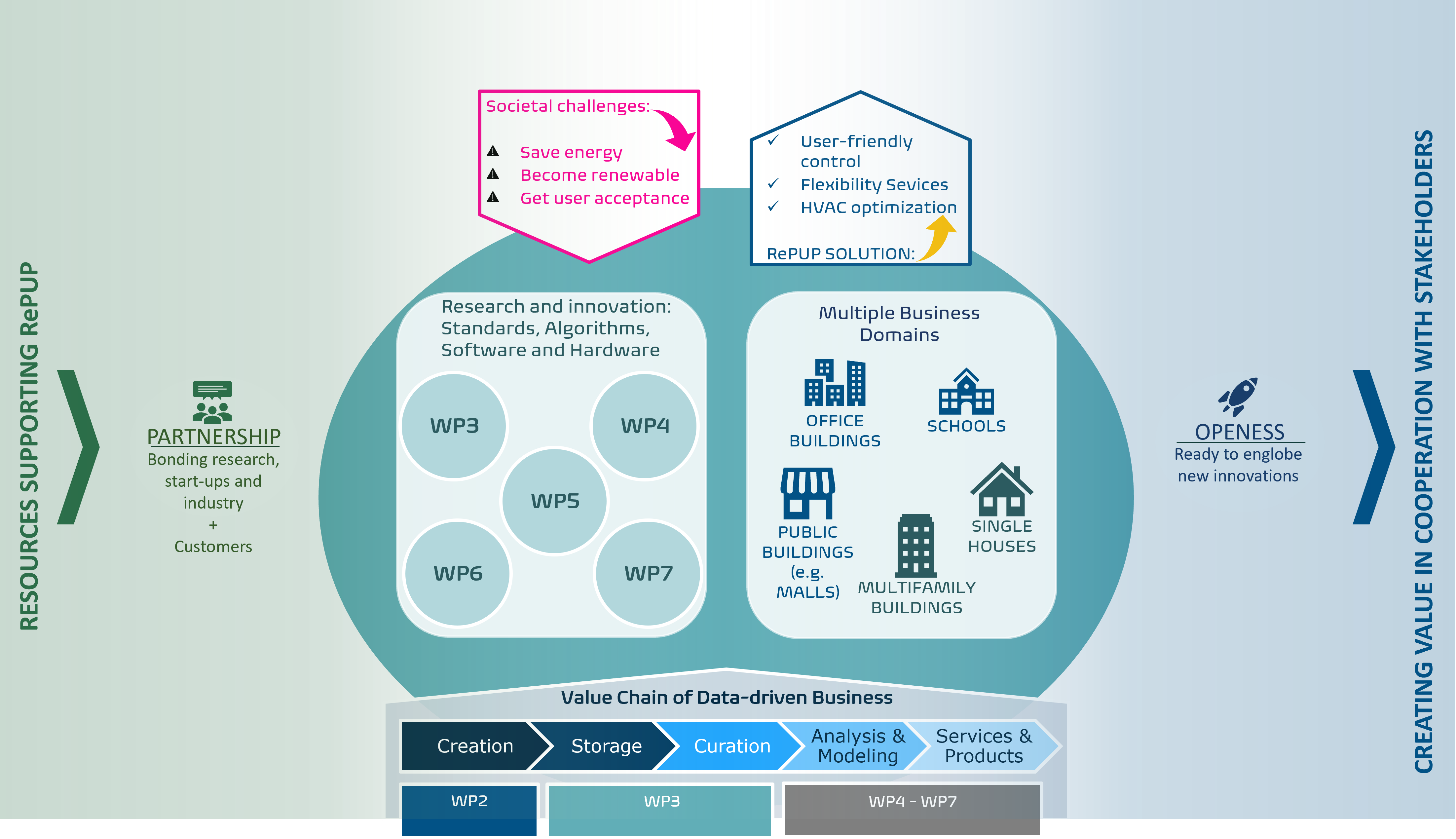Work Program
The RePUP work program builds on activities in eight work packages:
WP1 Management
WP1 oversees a collaborative environment within RePUP, ensuring effective communication of outcomes and products and manages the daily operation of RePUP.
WP2 Living Labs
The WP deals with the establishment of the project’s seven living labs, of which one is a school, one is a modern campus building at DTU (DTU Skylab) and five private homes.
To select the five homes, we will use the tool BoligAnalysen. Together with DTU Compute and DTU Sustain, the municipality of Høje Taastrup will select five homes that can be retrofitted. The retrofit will include:- Installation of IoT monitoring sensors
- Installation of IoT actuators, e.g. smart thermostats, motorized windows, motorized shutters
- Exchange of existing oil boiler with a new air-to-water heat pump system
- Exchange of existing ventilation system with a new system with heat recovery
WP3 Extreme-Scale Data Sharing Platform
WP3 will provide a common, real-time, GDPR compliant data sharing & tool hosting platform. The platform will facilitate the integration of the RePUP solution into the living labs.
Worth noticing is that while typically telemetry data from buildings consists of objective measurements (such as temperature, relative humidity, carbon dioxide concentration, noise, VOC, etc.), RePUP adds a second layer of measurement, namely the subjective feedback of the occupants.WP4 Debugging of Buildings
WP4 will provide debugging of the buildings‘ systems dealing with both inappropriate human behaviour and technical faults. By detecting and correcting faults, it will save energy and enhance occupants’ comfort.
Through the mobile app FeedMe, occupants will be provided with personalized information on how to create a comfortable environment in an energy-efficient manner. In this way, the WP will work towards finding and fixing faults and informing occupants to enable an efficient manual or automatic controlWP5 Comfort Guarantee
Peoples indoor environment prefence and comfort needs vary considerably between individuals. However, current standards and guidelines specify requirements for indoor environment based on population averages. WP5 aims to define new standards for the comfort of individuals. This will be done by learning and understanding occupants’ needs, through wearable sensors and targeted microquestionnaires, which are rolled out to the occupants through the feedback app FeedMe. That way the needs and comfort requirements of individual occupants can be defined in a dynamical environment, which in turn will provide means for mediation among occupants with different preferences.
WP6 Performance Upgrade
In WP6, 3D-AI will be used to optimize the buildings’ performance, using dynamical set points for heating, cooling (where available), ventilation and shutters.
The 3D-AI will be based on the ComfortID, developed in WP5. Model predictive control algorithms based on grey-box models will be used to optimize the building control based on three dimensions: Weather forecast, price signals, and human feedback. In this way, the 3D-AI can provide a comfort-guarantee for the occupants, since their individual preferences and requirements will be included in the control.WP7 Products
Innovation in WP7 will be addressed by demonstrating and developing products from the industrial partners. WP7 will work towards creating new technologies and products and creating a link between products to develop digital tools for the monitoring and control of buildings.
WP8 Dissemination
The objective of WP8 is to ensure that the project outcomes are disseminated to the building sector and other relevant stakeholders.
The figure below illustrates the RePUP work program:

